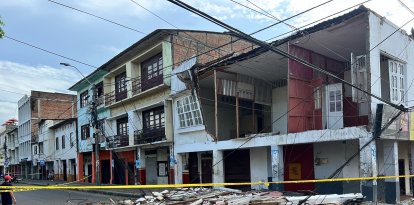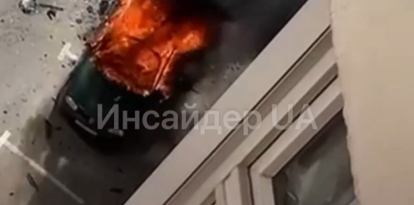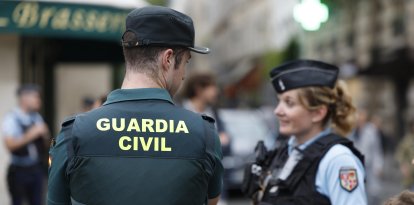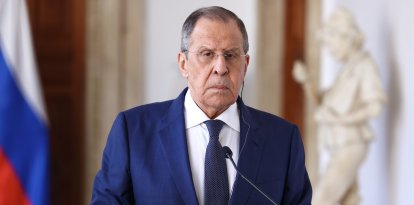One year of Israel's heroic war against terrorism in the aftermath of Oct. 7
The last 12 months have seen the involvement of Hezbollah and the Houthis in the conflict, attacks by Iran, spectacular Israeli operations, antisemitic protests in Europe and the United States and the U.N.'s complicity with terrorism. We walk through the most relevant moments of the hostilities that began after the brutal massacre.
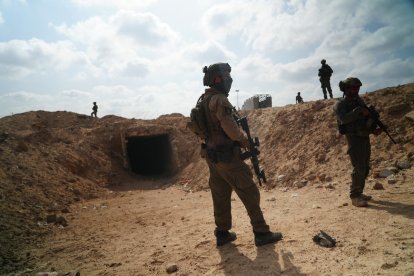
Israeli soldiers in Gaza
Since the war between Israel and Hamas broke out following the Oct. 7 massacre, the Jewish state has been facing attacks from all directions, even within its own territory, while much of the world has been justifying terrorism or asking the Jewish state not to defend itself against the genocidal Islamists that surround it.
The following is a summary of some of the most relevant events in the Middle East and other parts of the world since the conflict erupted after the brutal terrorist attack perpetrated by Hamas and other radical Palestinian organizations.
Ceasefire agreements
Several attempts to reach new agreements, brokered mainly by the U.S., Egypt and Qatar, have followed but have not been successful. Hamas is still estimated to be holding 101 Israelis in Gaza.
Chilling confessions of Palestinian terrorists captured by Israel
As the war progressed, the Israeli military began releasing footage of chilling interrogations with captured Palestinian terrorists, who confessed to murdering civilians and raped women.
Hezbollah gets involved in the conflict
A day after the counter-offensive launched by Israel in Gaza, Hezbollah decided to get involved in the conflict and began carrying out rocket and missile attacks against the north of the Jewish state, which escalated over time and resulted in some 80,000 Israelis being forced to flee their homes.
UN secretary general opts to side with terrorists
A few days after the brutal attack by Hamas and other terrorist groups in southern Israel, in which nearly 1,200 people were killed and more than 240 kidnapped, António Guterres, secretary general of the U.N., justified the massacre, saying it did not "happen in a vacuum," prompting outrage in Jerusalem, which demanded his resignation.
Recently, Israel Katz, Israel's foreign minister, labeled Guterres persona non grata for not directly condemning the latest Iranian attack on the Jewish state or the Oct. 7 massacre.
Houthis join Hamas and Hezbollah from Yemen
The Houthis, the Iranian-backed terrorist group in Yemen, have also provided assistance to Hamas by launching missiles against Israel, which did not stand idly by and carried out strong counteroffensives against terrorist targets, such as last July in the Al Hudaydah port area, as well as in late September.
Hamas' sadistic psychological warfare
Hamas has also killed Israeli hostages during the war and last September even released a video of propaganda showing six kidnapped hostages who were later found dead in an IDF raid on tunnels in the city of Rafah, in the Gaza Strip.
According to The New York Post, the video was posted on Hamas' Telegram account and all of the victims: Hersh Goldberg-Polin, 23, Eden Yerushalmi, 24, Ori Danino, 25, Alex Lobanov, 32, Carmel Gat, 40, and Almog Sarusi, 27, can be seen introducing themselves in what were likely their final moments alive.
Israel's mistakes
During the war, Israel has made some tragic mistakes. Last December, the IDF acknowledged that it accidentally killed three hostages who the troops mistook for terrorists.
Months later, in April this year, Israel wrongly bombed a convoy of the humanitarian organization World Central Kitchen (WCK) in Gaza. Seven WCK aid workers were killed in the tragic event (three British, one Polish, one Palestinian, one Australian and one American-Canadian). The Jewish state acknowledged the mistake and carried out an investigation, according to which it was a "mistaken identification" when three vehicles were attacked believing that Hamas terrorists were inside them.
Antisemitic protests on US college campuses
The conflict between Israel and Hamas led to a series of massive antisemitic protests in some European countries and in United States, especially on college campuses, promoted by radical leftists and Islamists.
In the wake of these demonstrations, largely funded by left-wing organizations and Qatar, a fierce controversy arose after the chancellors of Harvard, UPenn and MIT suggested that the call to carry out genocide against Jews by students at those academic institutions did not violate their institutions' respective codes of conduct.
Following the scandal caused by their statements, UPenn's Liz Magill and Harvard's Claudin Gay resigned from their posts, while MIT's Sally Kornbluth is still at the helm of the institution.
The spectacular rescue of Noa Argamani and three other hostages
Another relevant event was, of course, the spectacular rescue of four hostages by Israeli special forces in Gaza. Among those rescued was Noa Argamani, one of the most recognizable faces of the massacre in Israel that kicked off the war after a video of her sobbing as she was forced onto a motorbike went viral. The young woman reappeared in another video in January, released by Hamas to mark 100 days since Oct. 7, to put pressure on the Israelis. An IDF soldier was killed during the operation.
Iran directly attacks Israel
Last April, in response to a bombing attributed to Israel on a building adjacent to the Iranian consulate in Damascus, Syria, in which Mohammad Reza Zahedi, a senior officer in the Iranian Revolutionary Guard Quds Force, the Islamic Republic launched its first direct attack on Israel with more than 300 rockets and drones. This offensive was allegedly a response to the Jewish state bombing Iranian territory.
The elimination of Ismail Haniyeh
One of the most important operations attributed to Israel since the Oct. 7 massacre was the elimination of the leader of the Hamas political bureau, Ismail Hanyeh, which was reportedly carried out with an explosive device placed under his bed in a building in the Iranian capital of Tehran.
The spectacular and historic pager operation in Lebanon and Syria
Another relevant operation attributed to Israel was the operation in which the pagers of thousands of Hezbollah terrorists exploded in Lebanon and Syria in September, leaving 11 dead and at least 4,000 wounded.
This attack was followed the next day by a similar one, in which walkie talkies belonging to the terrorist group in Lebanon exploded, leaving 20 dead and hundreds wounded.
Israel wipes out Hezbollah leadership, including Hassan Nasrallah, and enters Lebanon
In addition, Israel has successfully dismantled Hezbollah by killing its most important leaders, culminating with the recent elimination of Hassan Nasrallah, leader of the terrorist group, in a bombing in Lebanon, after which it launched a ground incursion into Lebanese territory, which is still ongoing.
Israeli forces discovered in Lebanon that Hassan Nasrallah planned to carry out a massacre in the north of the Jewish state similar to the one perpetrated by Hamas and other Palestinian terrorist groups on Oct. 7, days after that brutal attack in southern Israel, the Israel Defense Forces Spokesperson's Unit reported.
According to the plan revealed by the IDF, about 2,400 Hezbollah terrorists were prepared to descend into subway tunnels, cross the border and invade northern Israel to murder and kidnap Israelis.
Iran's second direct attack on Israel
Following the elimination of Nasrallah, Iran last week carried out its second direct attack on Israel, firing nearly 200 ballistic missiles, killing one Palestinian and wounding a handful of Israelis.
On the same day that the Iranians launched their offensive, two Palestinian terrorists shot and killed eight Israelis in Tel Aviv.
Terrorists disguised as the UN and Al Jazeera
Another major development in the war is the involvement of employees of the Qatari news network Al Jazeera and the United Nations Relief and Works Agency for Palestine Refugees in the Near East (UNRWA) in terrorist activities against Israel.
Regarding Al Jazeera, it could be argued that Qatar not only provides financial support to Islamic extremism, funds antisemitic hatred in U.S. universities and disguises its "press department" (Al Jazeera) as a news channel, but also disguises Islamic terrorists as innocent journalists.
In an article published in Commentary, American journalist Jonathan Schanzer named six such terrorists disguised as journalists.
As for UNRWA, the U.N. itself has acknowledged that according to the results of an internal investigation, it is possible that nine employees of the agency were involved in the Oct. 7 massacre.
Hamas also robs, kidnaps, tortures and murders Palestinians
Hamas, as is its habit, has also stolen funds and murdered and tortured Palestinians. The most recent known case occurred when terrorists from the Islamist group murdered Palestinian activist Islam Hijazi after the woman refused to hand over charity funds she had raised for the Heal Palestine organization, which provides health aid to the Gaza Strip.
Another high-profile case was that of Palestinian activist Amin Abed, who was kidnapped and tortured by Hamas terrorists in Jabalia, Gaza, for criticizing the Islamist organization. Speaking to the BBC, the activist maintained that despite what happened, "I will not stop using my right to express my rejection of the October 7 attack."
RECOMMENDATION
